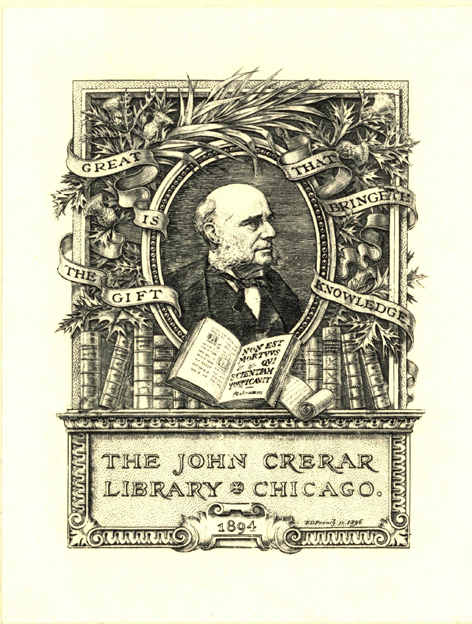Review by New York Times Review
IN 1883, Émile Zola warned that in the department store, then emerging as a hallmark of modern Paris, church doctrine had been replaced by the religion of the cash register. Even in today's challenging economic environment, a saunter through any luxury shopping emporium confirms the accuracy of this view. So too does Linda Grant's "Thoughtful Dresser," a zealous affirmation of the consumerist creed: "I'm entitled. Entitled to be walking along Bond Street and entitled to go inside Hermès and inquire the length of the waiting list for a Birkin handbag." An English writer whose novel "The Clothes on Their Backs" was shortlisted for the Man Booker Prize in 2008, Grant has no use for the spiritual counterargument: "Better people than myself might sit under the great dome of St. Paul's and contemplate God and infinity. Good luck to them." For her money, shopping is the ultimate "balm for the troubled soul," even when times are tough. "Because in a recession the last thing I want to feel is depressed, and depressed 1 would feel if I was wearing dreary, cheap clothes.... You need to buy now the costumes you will need for the impoverished future." On its face, this claim may sound like an expression of the blithe indifference to fiscal hardship of which (again in the land of Zola) a certain putatively cake-loving queen once stood fatally accused. Yet Grant stresses that her own interest in clothing comes not from elitism but from its opposite - from her Eastern European immigrant family's realization that as long as they looked like interlopers, they would be treated as such: "As my grandparents found out, their clothing not only sent messages to the new country that they were themselves new arrivals, out of place and out of time, but by changing the clothes ... they also changed themselves." Clothing "allowed the process of assimilation, in which they became Englishmen and -women, to take hold." It is thus with an outsider's sensitivity to unwritten codes, rather than with an insider's sense of privilege, that Grant approaches her subject. Which sounds promising enough, but yields disappointingly flat-footed results, as when she writes: "And so in triumph, my family's two mottoes (Only the rich can afford cheap shoes and There's only one thing worse than being skint [broke], and that's looking as if you're skint) echo like animated foghorns down the ages." Leaving aside the question of whether a foghorn can be "animated," neither of these truisms strikes me as a particularly shrewd meditation on what fashion can mean. Nor is Grant any more insightful when she swaps her justfolks aphorisms for the language of New Age self-discovery: "Clothes are a lifelong journey into acquiring an identity"; "I developed my own identity through clothes" ; "When you start to dress yourself, you are beginning a lifelong journey into your own future, the subtle, everyday construction of who you are through what you wear." Grant then proceeds, through an abrupt pronominal sleight of hand, to implicate the reader in her own "lifelong journey" toward "identity" : "As soon as a new style appeared you had to wear it, because you were, like fashion itself, in a continual state of flux." I was? "But every time you changed your clothes, you discovered another new self." I did? Well, maybe I was, and maybe I did, but having never met Grant, I object to her speaking for me. All the more so because she gets "my" age entirely wrong: "At 16 and again at 60 you are at the age when you use clothes to discover new identities. To stand in front of the mirror and see a different person with each garment you put on: to explore all those possibilities, those various selves." As anyone who's ever lived with me has learned the hard way (you know who you are, and I apologize), teenagers and matrons aren't the only ones for whom "outfit" means "alter ego." Biker chick? Hippie chick? Milkmaid? Mermaid? Honey, I explored "all those possibilities" before you even finished your coffee. At this rate, I'll exhaust every conceivable persona long before I'm 60, assuming my Visa doesn't max out first. If it does, perhaps I'll try out Grant's wisdom on the credit card company, though something tells me that declaring my aversion to steint won't keep me out of debtor's prison. A bracing corrective to the glib platitudes of "The Thoughtful Dresser," Avis Cardella's "Spent" relates how the author's "compulsive shopping habit" pushed her to the brink of financial and existential bankruptcy. This riveting, painfully candid memoir exposes the dark side of the belief that we are what we wear. For if a woman doesn't know who she is on the inside, "Spent" reveals, then concentrating obsessively on the outside will only lead her farther astray. This is what happened to Cardelia, a former fashion editor, whose excessive spending habits wreaked havoc with her finances, her relationships and her soul. Like Grant, Cardella describes herself as the product of a blue-collar yet style-conscious background (in their small Brooklyn apartment, Cardella's mother "always seemed to be dressed for a costume party"), and as a believer in the "transformative powers" of terrific clothes. But these clothes consist, when she moves to Manhattan in her 20s, of "forest green spandex shorts," a matching T-shirt and "clownlike" black flats: hardly a power look in fashionable, fin de siècle Gotham. To fit into her new environment, Cardella reinvents herself as a chic urban sophisticate with a vast designer wardrobe, spending far more than she can afford in order to appear "perfect, polished and flawless." But the better she looks, the worse she feels. "Every time I searched for myself ... my searching yielded nothing more than a vague, nagging sense that something critical about me was missing. ... When I looked in my closet, I asked myself: How can a woman with a closet so full feel so empty inside?" To make sense of this conundrum, Cardella draws on the vocabulary of addiction, comparing her increasingly outof-control shopping sprees to a drunkard's binges ("The way an alcoholic might be found clutching the bottle, I'd be found clutching the Barneys bag") and New York's fashion culture to "a drug." Like a substance abuser, Cardella both loves and hates her compulsion: "The only thing that made me feel worse about myself was more shopping. The only thing that made me feel better about myself was more shopping." As her financial situation deteriorates, she is forced to lower her standards, trading Prada for Zara "like a drinker who had to switch from Champagne to cheap beer." Only when she hits rock bottom - her mountain of debt briefly prompting her to consider "entertaining men for cash" - does she go cold turkey and begin to ask the questions her addictive behavior has long kept at bay: "What was I made of? What was my character?" Novel these questions are not, but pondering them is essential - for Cardella or for anyone (and here it would have been fair for the author to address "you," aka me) who has ever sought to shape herself through dress. "To look in my closet," she writes, "was to see the costumes of a thousand and one people who didn't really exist. I wanted to see the woman who I really was finally coming into view." Caroline Weber, the author of "Queen of Fashion: What Marie Antoinette Wore to the Revolution," is a frequent contributor to the Book Review.
Copyright (c) The New York Times Company [June 6, 2010]
Review by Library Journal Review
British journalist and Booker short-listed novelist Grant (The Clothes on Their Backs) here offers in expanded book form the pieces she has contributed to the Guardian and on her blog of the same name, ruminating on particular issues relating to women and dress. Opening with a piece about a high-heeled red shoe found at Auschwitz, Grant writes that it is the pleasure taken from clothes that defines human beings, that "people have written and thought about clothes ever since we could write and think." These pieces cover a variety of topics, including the development of fashion after World War II, the use of clothes to make a woman feel sexy, and clothing for plus-size women and those (including the author) over the age of 50. An overall theme is the importance of clothes in the making of one's self, but Grant also explores such matters as the fashion industry's reaction to the 9/11 bombings. VERDICT A quick read that fashion enthusiasts will appreciate the most, but readers beyond that demographic will appreciate Grant's approach and will find themselves rethinking their views on fashion and clothes.-Nicole Mitchell, Univ. of Alabama Lib., Birmingham (c) Copyright 2010. Library Journals LLC, a wholly owned subsidiary of Media Source, Inc. No redistribution permitted.
(c) Copyright Library Journals LLC, a wholly owned subsidiary of Media Source, Inc. No redistribution permitted.
Review by New York Times Review
Review by Library Journal Review


